Why you can trust TechRadar
The HTC One A9 looks like an iPhone. I've covered this above, and I really don't think that it matters compared to the phone it is underneath.
There's no way this is an accident, of course - and I'm genuinely worried that HTC is going to invoke the Cupertino wrath with this phone - but it was a decision for a reason, and let's judge the phone on how it performs, rather than what it looks like. You'll have to decide yourself whether it's something you want to buy into.
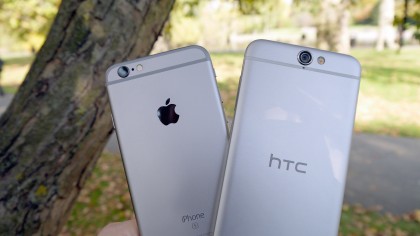
Let's focus on what's not the same: the power button is jagged and much nicer to hit, the volume key is on the right-hand side of the phone and the headphone jack is in a easier to use place at the bottom of the phone.
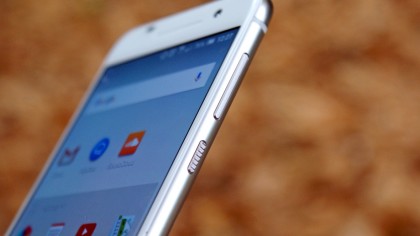
The smooth back of the phone is still really nice, no matter what it looks like, and invokes the smooth ceramic nature of the HTC One S from a few years ago. However, it's flatter and the corners far more rounded - I'm trying hard to not to talk about the comparison, but I've written things very similar about this recently…
The top of the phone has a large plastic section too - usually we'd expect the infra red blaster to live here, but that's gone - possibly hinting at a new design direction for HTC. The strip now houses the GPS chip, and the speed with which is locates you is impressive, so this bears out.
Overall, I think the One A9 is a phone that still shows HTC knows how to make a decent-looking phone, irrespective of how it looks compared to other brands. It's certainly slimline: 7.3mm compared to the 9.6mm of the One M9. The iPhone 6S comes in at 7.1mm, so it's certainly in that category.
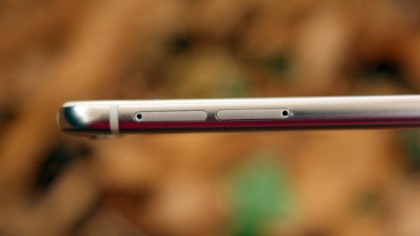
But for so long HTC was the industry leader in terms of design (and perhaps it will continue to be with the One M10 - this is a different kind of phone, after all) but this doesn't feel like the jewellery-grade phone we've come to expect and it's a shame that the talk about the design will be totally marred by its similarities to others.
The One A9 is very, very well made though. It feels like a dream in the hand and certainly won't be subject to claims of bending any time soon - this thing is amazingly rigid and feels premium.
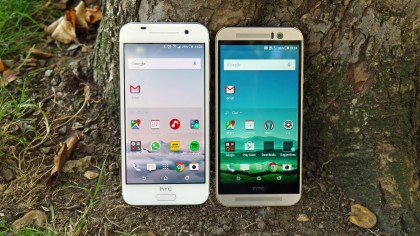
However, in terms of design I'm getting a similar feeling as the one I got when handling the Samsung Galaxy Alpha - it's a nice design, but it's not one that will make the phone desirable to all. Just those that crave a slimline 'fashionable' phone - and the battery size suffers as a result.
Screen
The screen on the HTC One A9 is squarely what you'd expect with a phone of this price point. It's a 5-inch AMOLED display, reportedly supplied by Samsung.
It's not a QHD resolution like many others around at the moment, but even though it's 1080p (or Full HD to those that prefer words) it doesn't lack for sharpness.
OLED technology brings such a rich contrast ratio that it helps offset the issue, as the color reproduction brings a level of sharpness to make most things you watch look good.
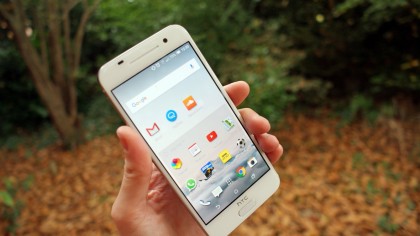
There are some issues, as web browsing doesn't look as clear and crisp (thanks to mostly just being black text on white backgrounds) as it might on the Samsung Galaxy S6, and viewing photos doesn't have the same clarity either.
But in theory that's not a bad thing, as the lower pixel count requires less of an effort from the graphics chip, and therefore saves battery life - when you've put a 2150mA power pack in there, anything is helpful.
It's not terrible in direct sunlight but not brilliant either - there could definitely be some more effort made to help with the auto brightness mode here.
It's a pretty good screen for a phone of this size and category - it looks great with real clarity in the colors. It's not the best out there, but the upper limit of what we'd be happy to accept.
Current page: Design and display
Prev Page Introduction and key features Next Page Specs and performance
Gareth has been part of the consumer technology world in a career spanning three decades. He started life as a staff writer on the fledgling TechRadar, and has grew with the site (primarily as phones, tablets and wearables editor) until becoming Global Editor in Chief in 2018. Gareth has written over 4,000 articles for TechRadar, has contributed expert insight to a number of other publications, chaired panels on zeitgeist technologies, presented at the Gadget Show Live as well as representing the brand on TV and radio for multiple channels including Sky, BBC, ITV and Al-Jazeera. Passionate about fitness, he can bore anyone rigid about stress management, sleep tracking, heart rate variance as well as bemoaning something about the latest iPhone, Galaxy or OLED TV.
